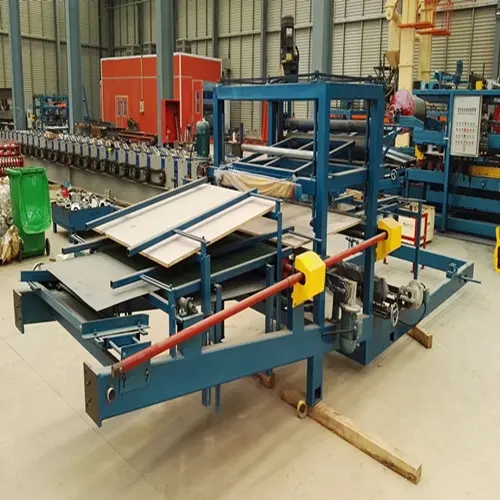
The Evolution and Impact of Automatic Beam Welding Machines
Automatic beam welding machines have revolutionized the manufacturing and construction industries by enhancing efficiency, accuracy, and overall productivity. These machines are pivotal in the fabrication of structures such as bridges, high-rise buildings, and large industrial facilities. In this article, we will explore the evolution of automatic beam welding machines, their working principles, benefits, and future prospects.
Evolution of Automatic Beam Welding Machines
The history of welding machines dates back to the late 19th century when manual welding processes were the norm. Early techniques were labor-intensive, requiring skilled welders to perform intricate tasks by hand. As the demand for faster and more consistent manufacturing methods grew, the welding industry began to innovate.
The introduction of automatic welding machines in the mid-20th century marked a significant turning point. These machines utilized electrical and mechanical advancements to automate the welding process, dramatically reducing labor costs and time. Over the decades, technology continued to evolve, leading to the development of sophisticated automatic beam welding machines that can perform complex welds with minimal human intervention.
Working Principles of Automatic Beam Welding Machines
Automatic beam welding machines operate on the principles of automation and precision. They utilize advanced technologies such as Computer Numerical Control (CNC), robotics, and real-time monitoring systems. The typical components of these machines include
1. Feeding Mechanism This component supplies the necessary raw materials, such as steel beams, to the machine for welding.
2. Welding Head The heart of the machine, where the actual welding process occurs. The welding head is equipped with various tools and techniques, such as MIG (Metal Inert Gas), TIG (Tungsten Inert Gas), or Submerged Arc Welding, depending on the application.
3. Control System The CNC system allows for precise control over the welding parameters, such as speed, voltage, and current, ensuring consistent welds.
4. Cooling System To prevent overheating during the welding process, an efficient cooling system is integrated into the machine.

Through these components, automatic beam welding machines execute welding tasks with high speed and accuracy, allowing for complex geometries and designs that would be difficult to achieve manually
.Benefits of Automatic Beam Welding Machines
The deployment of automatic beam welding machines brings numerous advantages to industries
1. Increased Efficiency Automation significantly reduces the time needed to complete welding tasks when compared to manual methods. This allows companies to increase production rates and meet tight deadlines.
2. Enhanced Quality With precision control over welding parameters, these machines produce consistent and high-quality welds. The likelihood of human error is minimized, leading to fewer defects and rework.
3. Cost Savings Although the upfront investment in automatic welding technology can be substantial, the long-term savings in labor costs, material waste, and production delays are significant.
4. Improved Safety Automation reduces the need for human labor in potentially hazardous environments, thereby enhancing workplace safety.
5. Versatility Modern automatic beam welding machines can be programmed for various welding techniques and materials, making them adaptable to different projects.
Future Prospects
As technology continues to advance, the future of automatic beam welding machines appears promising. Innovations such as artificial intelligence, machine learning, and improved materials will likely enhance the capabilities of these machines even further. The integration of IoT (Internet of Things) technology may lead to smarter machines that can self-optimize and monitor their performance in real-time, resulting in even higher efficiency and quality.
In conclusion, automatic beam welding machines play a crucial role in modern manufacturing and construction. Their evolution has transformed traditional welding practices, paving the way for increased efficiency, safety, and quality. As technology progresses, we can expect these machines to become even more integral to the industries they serve, paving the way for a new era of manufacturing excellence. The future of welding looks bright, driven by innovation and the quest for enhanced productivity.